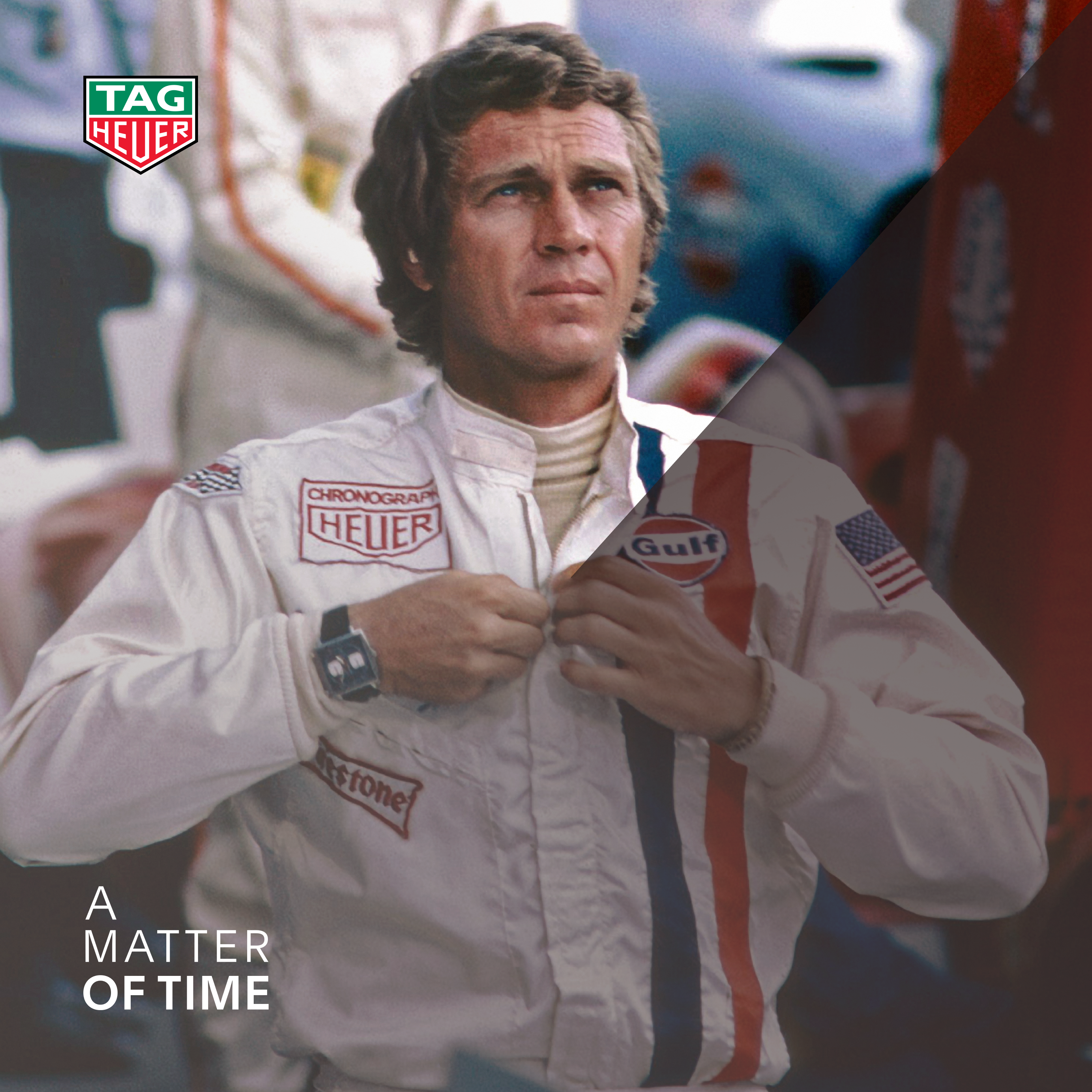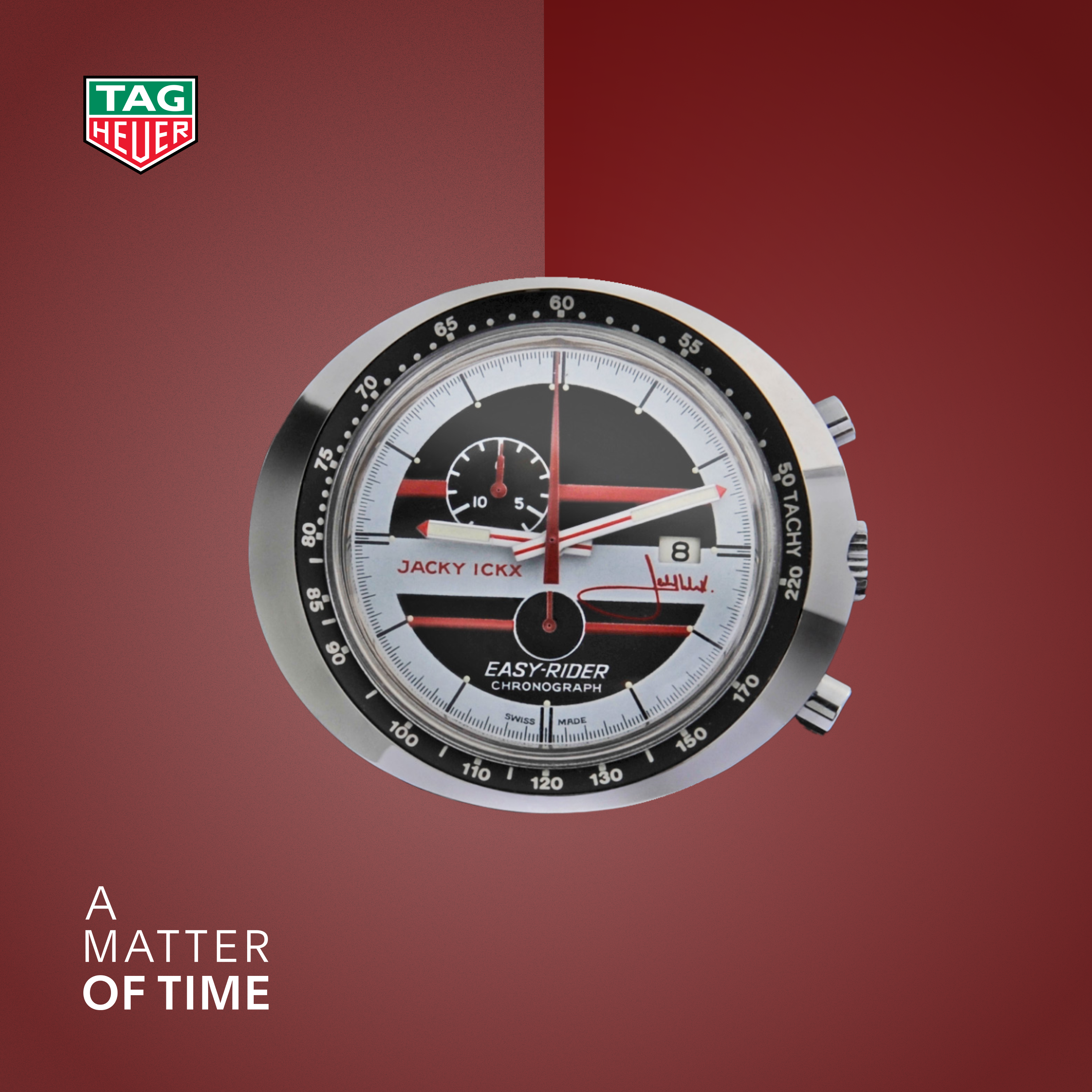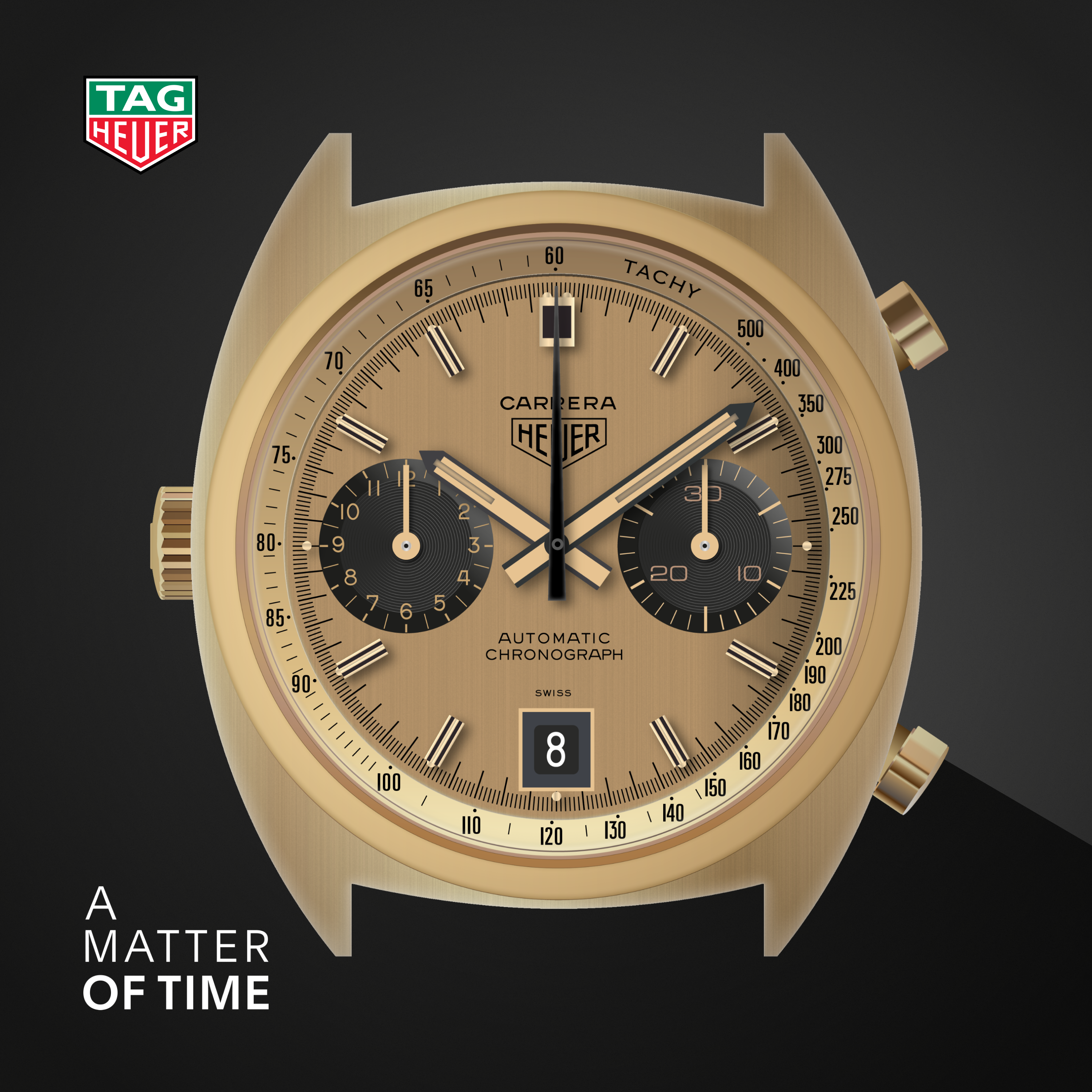Episode Transcript
[00:00:03] Welcome to a matter of time, a podcast by Tag Heuer. I'm your host, Nicholas Wiebeck, heritage director at TAg Heuer and a lifelong enthusiast for fine swiss watchmaking.
[00:00:15] In this series, we're exploring the history of the Monaco collection and sharing some of these amazing stories that have existed throughout the history of the distinctive model. So far in this season, we've looked at the birth of the Monaco and the arrival of the famous black coated watch as well as our relationship with Steve McQueen. And now we're going to jump nearly two decades, in fact, from the end of the Monaco really finishing in 1978 with this famous black coated series of watches to now the rebirth of the collection in 1997.
[00:00:49] It's fascinating to explore the history of the brand under the ownership of technique Davant Gar group. Having acquired the Heuer name in 1986, they devolved the business, launching the Formula one collection and doubling down on the dive watch pieces around a design form driven by what were called the six rules. This meant that throughout the early 1990s, a lot of the watches looked very similar when we look at the series. 10 00 20 00 40 00 60 00 the sports elegant collection, they all clearly have a shared DNA and a shared design philosophy, totally different from what existed previously when we understand things like the Carrera and the Monaco's that had gone before.
[00:01:28] But by the mid 1990s, the brand was beginning to understand this incredible heritage that the maison had and wanted to leverage it even further.
[00:01:36] A series of relaunches were planned, focused as limited editions on iconic designs from the past. The first would come in 1996 with the Carrera 5000 pieces that would go on to sell out very quickly and would form the foundation for a brand new collection that would evolve over the next nearly three decades.
[00:01:57] But it was the Monaco that took a rather different approach, whereas the Carrera had been almost a one to one copy of the original with the exact same case form, a manual wind chronograph movement, although it changed suppliers from Valjean to La Magna, and a dial aesthetic that was almost exactly the same for the Monaco in 1997, a very different approach was taken, squaring the case in a form that was rather different from the original 1133 that often to some people appears to be a rectangle but in fact is square, but has this over square proportion due to these curves at the edge of the cases.
[00:02:32] Whilst these elements were retained on the new Monaco design form, in fact, the crystal is not quite exactly square and this gives the watch a sense of a more exactly square proportion. Rather interestingly, although it is an optical illusion. The case was made a little bit thicker to accommodate the new movement and norms around the robustness of the case designs. The crystal now, of course was made of sapphire, but following the form of the curve running from the crystal from 03:00 to 09:00 position, and a straight edge running from six to twelve, when we look at the dial, it's rather different as well. The first series of collections didn't launch with a distinctive blue finish, but instead focused on the black. And it took a mixture of identities from previous Monaco's that had existed, for example, the crosshaired running seconds that had existed on the calibre 15 versions. So when we look at the complete package of the watch with this new case form and this new dial format, whilst the DNA of the Monaco can still be seen in the overall form, in fact it is a 100% new watch. Of course, inside we no longer have the calibre eleven or one of the earlier Valgio 77 series movements, but now it's moved on to the contemporary version of the what was at the time the ETA 28 20 E four. So overall, we're looking at a watch that in theory encapsulates some of the philosophies that made the Monaco significant from the beginning, but is completely reimagined for a new clientele and a new modern era.
[00:04:02] In a way, it was perhaps fortunate that they considered this as a limited edition of 5000 pieces to start with, given that the Monaco had not been particularly successful when it had initially launched, only surviving for five years before it was discontinued and the existing watches were sold at a discount. It was a bit touch and go as to whether this new form and this new imagining of the Monaco collection would be a commercial success.
[00:04:25] Luckily for us, consumer taste had evolved dramatically and thanks to markets such as Italy and other parts of continental Europe that understand the amazing vision that the Monaco had projected into the future. There were clients ready and waiting to buy the pieces.
[00:04:41] It's interesting to consider that throughout the two decades since the Monaco had disappeared from the catalogue, the watch had not been really carefully considered. But in certain markets, as already mentioned, Italy and certain parts of continental Europe, but also North America, there was a clientele, particularly among artistic communities and people who understood popular culture, who had learned to love the Monaco aesthetic. I must admit, for me personally, it was a watch that I never really understood when I first saw an 1133 b, I just didn't really rationalize why people wanted to wear this thing. It looked like a large block of stainless steel, very uncomfortable to wear. It was really a mystery to me. But then over the years, I've been lucky to spend a lot of time wearing them. And today, in fact, an early 1133 b with so called transitional, iridescent blue dial has become a watch that I regularly wear.
[00:05:34] It goes to show that it's really a love it or hate it watch.
[00:05:38] Initially with the eyes, it's quite difficult to understand the ergonomics and the aesthetics of the piece. But once you wear it and you learn to love it, it can really grow on you and become a key part of your collection. And that's what we often see with our clients. It's not the first watch that they buy from Tag Heuer, but it might be the second or third. It's a watch that's so iconic that people feel that it's something that they should own and enjoy.
[00:06:01] Since the relaunch in 1997 and the amazing success of the first 5000 pieces, the collection has expanded. Very soon afterwards, we would see a new dial design introduced that was a bit more traditional with its three register layout and consistent design between the subsidiary dials. And today, it's amazing that often when I go to events with our partners at Porsche or to Formula one races, you still see these early references of the relaunched Monaco from the late 1990s.
[00:06:30] Of course, thanks to this amazing success, much like the Carrera, the Monaco would continue to be a pillar for the brand. And today it's one of our four major families that we are focused on the development and evolution of for the future.
[00:06:52] I hope you've enjoyed today's episode of a matter of time. Please don't forget to share with us your thoughts and your feedbacks on these episodes. We always love to hear it.
[00:07:04] I look forward to welcoming you for the next chapter of the Monaco story in our following episodes.
[00:07:09] In our next episode, we're going to be discussing an amazing revolution for the Monaco, a great technical leap forward called the Monaco v Four.


